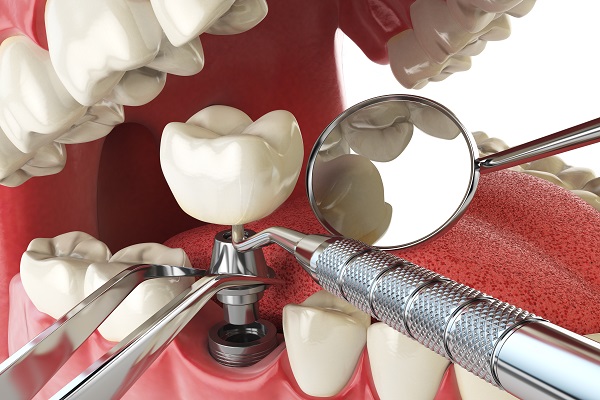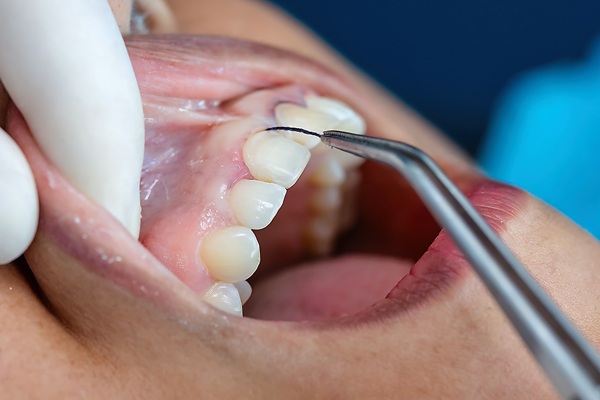Surgical Implant Placement for Tooth Replacement

Dental surgical implants are changing how people replace missing teeth, replacing unsightly bridges and dentures. If you’re considering tooth replacement, you may be interested in learning more about surgical implants placement, which is used to affix dental implants directly into your jawbone. There are a few limitations on the type of teeth that can be replaced with surgical implants with implant placement.
Understanding different types of dental implants
There are three types of dental implants. Two of them, known as endosteal and subperiosteal implants, function in a very similar way. These implant types have their unique benefits and drawbacks. Before we discuss these different options, it’s important to review basic information about both types so you can determine which ones will be best suited to your needs.
The first type of implant is known as an endosteal implant. This type of device is anchored into the bone using small screws. The second type, called a subperiosteal implant, operates in much of the same way. This option consists of two parts: one that lies under the gum tissue and one that connects to dental crowns. Although they function similarly, there are a few differences between these two types of implants.
The major difference between these two implant types is that endosteal implants require bone grafting, which means they take longer to heal. However, subperiosteal implants are prone to falling out of position because they rely on gum tissue and not bone for support.
Dental implant surgery procedure
Dental implants are prosthetic tooth roots placed in a person’s jawbone. An implant is used to anchor replacement teeth. Once in place, they work just like natural teeth and can be used to secure dentures, bridges, or crowns.
The surgical procedure involves three major steps: surgery, osseointegration, and placement of a final restoration. The implant surgery is performed under local anesthesia to numb only certain parts of your mouth, so you are awake during the procedure. The dentist makes an incision in your gum tissue and removes a small portion of bone from your jaw. After that, a metal post is placed into your jawbone, where a tooth root would typically be located.
The second stage of dental implant surgery, osseointegration, can take months. During that time, your body will form new bone tissue around your implant post to ensure a solid foundation and secure hold. This healing process varies from patient to patient and is affected by several factors, including age, health conditions, and general well-being.
Dental implant placement aftercare
After your implant placement procedure, you may have a metal scaffold placed over your jawbone to keep everything in place. Make sure to follow instructions about caring for that piece of equipment until removed. With good care, you’ll be back on your feet and ready to eat solid foods in just a few days.
While it’s best to avoid chewing on that side of your mouth, be sure to continue with regular brushing and flossing throughout your recovery. In addition, you should only drink water from a straw or bottle during healing—avoid hot drinks and alcohol altogether, as they can cause damage. Take a pain reliever when needed for soreness.
Contact your dentist today
Your dentist can help evaluate your current condition and recommend the best treatment options for you. Dental implants can help you quickly return to a life that you deserve. Don't hesitate to call your dentist today.
Request an appointment here: https://smilesonbalboa.com or call Smiles On Balboa General, Esthetic, and Implant Dentistry at (415) 413-2237 for an appointment in our San Francisco office.
Check out what others are saying about our dental services on Yelp: Dental Implants in San Francisco, CA.
Recent Posts
Dental implants restore functionality to the smile, all while looking and feeling like natural teeth. They achieve this by fusing with the jawbone, creating a permanent, irremovable tooth replacement solution that does not slip or slide. This benefit makes them a great option for patients seeking an alternative to traditional dentures.Dental implants are metal screw-like…
Wondering about dental implants? Read on to learn more. If you have experienced tooth loss and are exploring potential replacement options, then you have probably heard about dental implants. Dentists and patients are turning to tooth implants because it is provenly effective for replacing missing teeth. However, there are different implants, each of which is…
Missing one tooth or multiple teeth can make it harder to perform everyday functions. It can also make you feel self-conscious about smiling. Dental implants not only restore the function and appearance of your smile, but they also help restore your everyday oral health.Dental implants are artificial tooth roots surgically placed in a person's jawbone.…
Curious about dental implants? Read on to learn more. Dental implants have positively changed smile reconstruction, providing patients with missing teeth with an effective solution. Implants are a natural-looking and long-lasting alternative to conventional dentures and bridges. This article explains the impact of dental implants on smile reconstruction and oral health, including how they restore…


